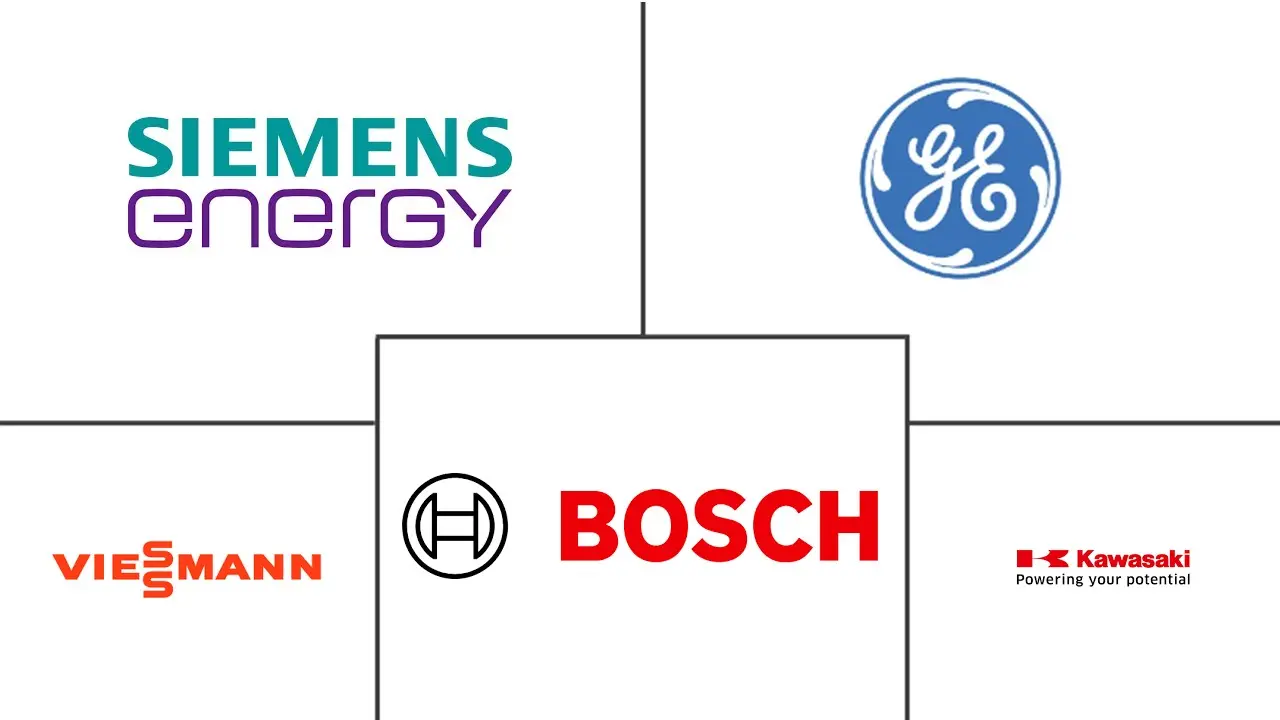Market Size of Combined Heat and Power Industry

| Study Period | 2020 - 2029 |
| Base Year For Estimation | 2023 |
| CAGR | > 7.50 % |
| Fastest Growing Market | North America |
| Largest Market | Asia Pacific |
| Market Concentration | Medium |
Major Players
*Disclaimer: Major Players sorted in no particular order |
Combined Heat and Power Market Analysis
The combined heat and power market is expected to register a CAGR of more than 7.5% during the forecast period, 2022-2027. The COVID-19 pandemic caused a decline in demand for combined heat and power systems due to lower demand for electricity as lockdowns were instituted to contain the virus, which resulted in the closure of commercial and industrial facilities. The pandemic caused a decline in discretionary spending which further affected the market. Factors such as the positive outlook for natural gas supply and price, increased energy efficiency, and environmental regulatory pressures on power plants and industrial boilers, amongst others, are expected to drive the number of installations of combined heat and power plants across the world. Although many efforts have been made over the years to remove technical and regulatory barriers and to promote wider adoption of combined heat and power, factors such as grid interconnection and significant initial capital investment, amongst various others, remain a significant challenge for the combined heat and power market in the United Kingdom during the forecast period.
- Natural gas-based fuel type is expected to grow significantly in the global combined heat and power market during the forecast period.
- Small-to-medium size industrial facilities could benefit from flexible and cost-effective combined heat and power systems. Such systems have the benefit of conventional combined heat and power but could also provide support to the electricity grid in the form of electricity supply, frequency regulation, and reserve capacity. This, in turn, is expected to create significant opportunities for the combined heat and power system providers and plant developers in the near future.
- North America has dominated the combined heat and power market, with the majority of the demand coming from the United States and Canada.
Combined Heat and Power Industry Segmentation
The combined heat and power market report includes:
| End-user Sector | |
| Commercial | |
| Residential | |
| Industrial and Utility |
| Type | |
| Gas Turbine | |
| Steam Turbine | |
| Other Types |
| Fuel Type | |
| Natural Gas | |
| Renewables | |
| Other Fuel Types |
| Geography | |
| North America | |
| Europe | |
| Asia-Pacific | |
| South America | |
| Middle-East and Africa |
Combined Heat and Power Market Size Summary
The combined heat and power (CHP) market is poised for significant growth, driven by factors such as the positive outlook for natural gas supply and pricing, increased energy efficiency, and environmental regulatory pressures. Despite challenges like grid interconnection and high initial capital investment, the market is expected to expand, particularly in regions like North America, where the United States and Canada lead in demand. The natural gas-based fuel segment is anticipated to experience substantial growth due to its cleaner combustion process compared to other fossil fuels and the increasing support for natural gas production and infrastructure. This growth is further supported by developments such as new CHP facilities in educational and industrial settings, which aim to reduce greenhouse gas emissions and enhance energy efficiency.
The North American region is expected to maintain its dominance in the global CHP market, bolstered by initiatives to integrate renewable energy sources and improve grid stability. CHP technologies offer a solution for reducing energy costs and emissions while providing reliable electric power and thermal energy. Government investments and policy adjustments, such as California's feed-in tariff amendments, are encouraging the deployment of CHP units. The market remains moderately fragmented, with key players like General Electric, Siemens Energy, and Bosch Thermotechnology driving innovation and expansion. Internationally, support for high-energy efficiency CHP plants is evident, as seen in initiatives by the European Commission and Germany, which aim to enhance renewable energy production and innovative CHP capacity.
Combined Heat and Power Market Size - Table of Contents
-
1. MARKET OVERVIEW
-
1.1 Introduction
-
1.2 Combined Heat and Power (CHP) Installed Capacity Forecast, in GW, till 2027
-
1.3 Recent Trends and Developments
-
1.4 Government Policies and Regulations
-
1.5 Market Dynamics
-
1.5.1 Drivers
-
1.5.2 Restraints
-
-
1.6 Supply Chain Analysis
-
1.7 Porter's Five Forces Analysis
-
1.7.1 Bargaining Power of Suppliers
-
1.7.2 Bargaining Power of Consumers
-
1.7.3 Threat of New Entrants
-
1.7.4 Threat of Substitutes Products and Services
-
1.7.5 Intensity of Competitive Rivalry
-
-
-
2. MARKET SEGMENTATION
-
2.1 End-user Sector
-
2.1.1 Commercial
-
2.1.2 Residential
-
2.1.3 Industrial and Utility
-
-
2.2 Type
-
2.2.1 Gas Turbine
-
2.2.2 Steam Turbine
-
2.2.3 Other Types
-
-
2.3 Fuel Type
-
2.3.1 Natural Gas
-
2.3.2 Renewables
-
2.3.3 Other Fuel Types
-
-
2.4 Geography
-
2.4.1 North America
-
2.4.2 Europe
-
2.4.3 Asia-Pacific
-
2.4.4 South America
-
2.4.5 Middle-East and Africa
-
-
Combined Heat and Power Market Size FAQs
What is the current Combined Heat and Power Market size?
The Combined Heat and Power Market is projected to register a CAGR of greater than 7.5% during the forecast period (2024-2029)
Who are the key players in Combined Heat and Power Market?
General Electric Company, Bosch Thermotechnology GmbH, Siemens Energy AG, Kawasaki Heavy Industries Ltd. and Viessmann Werke Group GmbH & Co KG are the major companies operating in the Combined Heat and Power Market.

